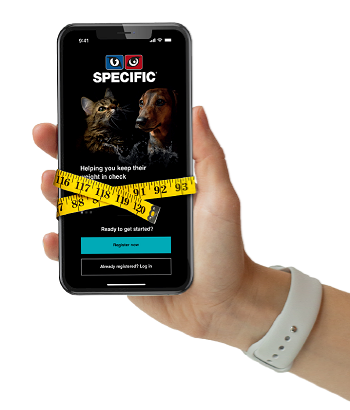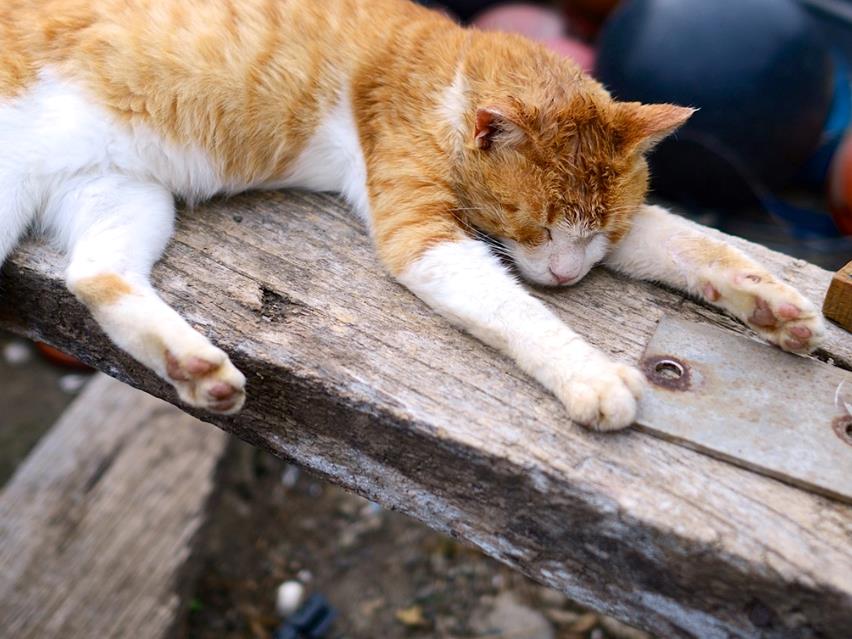Being overweight can cause all sorts of problems including diabetes, heart disease, cancer, and high blood pressure. Carrying too much weight also puts a strain on the joints leading to osteoarthritis.
It’s safe to say it’s best not to be overweight.
So why are so many cats overweight?
In the wild, food can often be in short supply and a lot of energy would be needed to get that food. The modern domestic cat has a much easier time of it, food on tap with no more effort required than walking over to the bowl. But that brings with it the risk of weight gain.
How can you tell if your cat is overweight?
There is some evidence to suggest that owners often underestimate their cat’s weight with many owners of overweight cats describing their cat as normal weight and owners of seriously overweight cats describing their cat as being a little bit overweight.
Speak to your vet, they are experts in this and will able to tell if they do need to lose some weight and give you valuable help to achieve this.
Here is a tool that will help you do this at home and see if a trip to the vets may be needed.
SPECIFIC™ body condition scoring guide for cats.
![]()
Are you trying to help your pet lose weight and do you need some help?
The SPECIFIC weight loss app is designed specifically for dogs and cats, helping you get your pet to their ideal weight.
The app provides:
- Feeding guidelines tailored for your pet
- Adjustable programme - as you progress through the weight loss journey the app adjusts feeding amounts, ensuring safe and steady progress to your goal
- Progress monitoring
- The opportunity to link to your vets
This user-friendly tool combines technology and pet care expertise to provide a seamless and effective solution for weight management. Promoting happier, healthier lives for our beloved four-legged companions.

OK so your cat needs to lose a few pounds – now what?
The first thing to say is take it easy – crash diets are a really bad idea in cats. A sudden reduction in the amount of food can bring on a condition called hepatic lipidosis, a fat infiltration into the liver sometimes called fatty liver.
The good news is that there are diets specifically designed to help your cat lose weight without going hungry and without reducing the amount of food eaten.
Specialist diets are low in fat and high in fibre so the energy density is less allowing your cat to enjoy full portions, giving them a feeling of fullness, whilst losing weight.
These diets are also high in protein. This means that the weight loss comes from fat rather than lean body mass, increasing the weight loss.
Steps to ideal bodyweight
Weight check: Get your cat body condition checked and weighed.
Planning: Work with your vet to decide what is the target weight; to choose a weight control food and then calculate the daily feeding amount.
Weight reduction phase: Implement the feeding. It’s important that during this phase you measure out the food so, if you need to you can easily and accurately adjust it.
Regularly weigh your cat – top tip a simple way to do this is weigh yourself, then weigh yourself while holding your cat then subtract the two numbers.
No treats for now - Don't spoil the good work with treats, especially table scraps, and make sure everyone in the house knows this.
Be patient – it’s not going to happen overnight but if you stick with it your cat will lose weight and it will all be worth it with a happier healthy cat.
Maintain weight: Once you have reached target weight you need to make sure they stay there – you may want to look at weight control diets that are lower in energy.
SPECIFICTM diets is only available at selected vets
(Who really love cats)
Launched in 2015 the Circle of Good was a commitment to pursue sustainable manufacturing and sourcing and to use a share of profits supporting marine sustainability initiatives."
Dominic Ebery
SPECIFICTM Nutrition Team, Dechra




